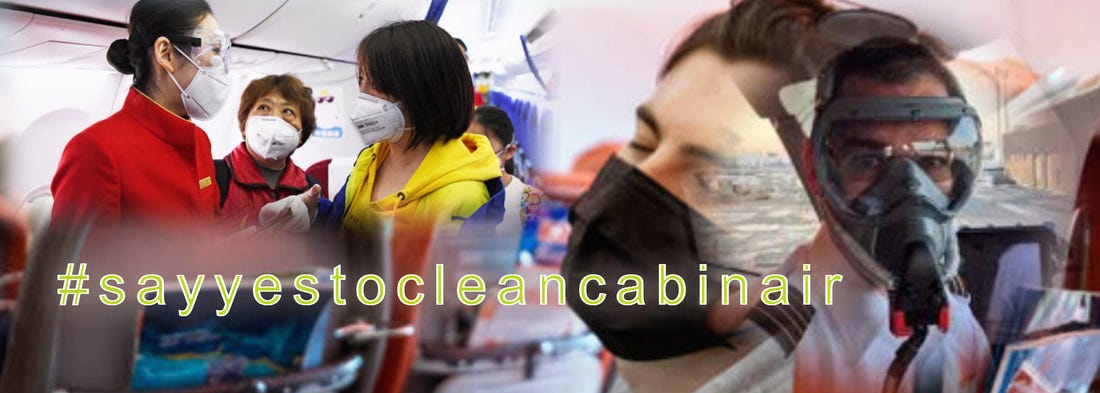Former R.A.F. pilots and aircrew dying of cancer launch legal action against the Ministry of Defense
The myth about 'safe levels' where chemical fumes are concerned
On 31 May 2024, following the hospitalization of four Jetstar cabin crew in Cairns/Australia who had been exposed to toxic fumes, Michael Sainsbury, a journalist with over 20 years of experience who also writes about human rights, wrote an article about toxic cabin air which was published in CRIKEY.
The stories about former RAF pilots and aircrew ill or even dying of cancer and their legal action against the MoD, which they claim "knew of the potential risks of toxic fumes" from military helicopters, were published by Katherin Lawton for Mail-Online two days before Michaels' post.
The testimonies of the sick personnel and their families state that the Ministry of Defence has been aware of the possible risks for over a decade, but has done nothing about it.
"Documents released in court cases have shown that the government knew about the dangers of the Sea King.” (source/ sic)
The myth about harmless levels
It is generally believed that only high levels of chemical vapors, such as those experienced during visible (smoke, mist) fume events, have the potential to cause health problems.
This is not the case.
"Chemicals are released into aircraft cabins and cockpits through the Environmental Control System (ECS) even during what are considered normal flights; but because they have been measured at “low levels” and often below the Occupational Exposure Limit Values OELs), are considered normal and a regular part of flying.”
”OELs assume that exposed persons are healthy adult workers, although in some cases the OELs should also protect vulnerable groups – e.g. pregnant women or other more susceptible people. They are tools to help employers protect the health of workers who may be exposed to chemicals in the working environment. OELs are usually set for single substances, but sometimes they are also produced for common mixtures in the workplace, for example solvent mixes, oil mists, fumes from welding or diesel exhaust fume.” (source OSHA/Europe)
“OELs are usually established for single substances. When two or more harmful substances, which act upon the same target organ, are present, their combined effect, rather than that of either individually, should be taken into account. In the absence of information to the contrary, the effects of the different hazards should be considered as additive. Synergistic effects, when substances combine to give a greater effect than expected from simple linear addition, may occur with some combinations of atmospheric contaminants; such cases at present must be determined individually.” (sic/OSHAEu)
The body reacts to chemicals based on several factors, including the concentration and dose of the chemical, its physical and chemical properties, the route of absorption, the health, age, and sex of the person exposed, the condition of their immune and endocrine systems, and external variables like humidity, temperature, and length of exposure.
An acute kind of exposure is indicated when a substance's adverse effects manifest within a day or less after exposure. This is typically the case when an unexpected event at work is referred to as an "accident." This kind of exposure is considered chronic if negative effects develop after extended exposure to small amounts or concentrations of chemicals found in the workplace. Exposures at work are typically long-term.
Whether mixing effects—chemicals combined at low levels that separately do not create detectable effects—can occur is a crucial concern in the risk assessment of multiple chemical exposures.
Researchers discovered strong evidence of substantial mixing effects in the literature on low-dose mixes, with combinations of chemicals much below their individual "no observable adverse effect levels" (NOAELs), both in mixtures of compounds that operate similarly and differently.
Empirical evidence does not support the generally held belief that combinations of distinct chemicals are "safe" at levels below the NOAEL. The researchers demonstrated that this perspective is also predicated on the false supposition that NOAELs are equivalent to zero impact levels. (source: LOW-LEVEL Exposure to Chemicals).
A list of some of the endocrine-disrupting and nervous system-damaging chemicals found in aircraft cabin and cockpit air to date can be viewed in the latest post by Trudie DADD on our PETITION website, where you can also have a look at the list of “rare” fumes and so-called “odor” incidences and accidents over the past couple of months.
Scientifically, 10% of an iceberg is visible while 90% of its volume is unseen. Unless the pilot and cabin crew communities truly understand the risks and demand change, the aviation industry's icy wind of indifference about subjecting them and their passengers to toxic gasses while on board will continue to blow.
Also, read about the latest court case in Romania “Wizz Air’s cabin air not so pink after all”.
For further information on Aerotoxic Syndrome, testimonies, medical information and laboratory protocol(free downloads!), and much more, please visit:
UNFILTERED https://www.unfiltered.vip/
Sources
CRIKEY article by Michael Sainsbury https://www.crikey.com.au/2024/05/31/jetstar-toxic-fumes-airlines/
OSHA/Europe https://oshwiki.osha.europa.eu/en/themes/occupational-exposure-limit-values
LOW-LEVEL Exposure to Multiple Chemicals … https://ehp.niehs.nih.gov/doi/full/10.1289/ehp.9358:
DAILY MAIL online article by Katherine Lawton https://www.dailymail.co.uk/news/article-13469581/Former-RAF-pilots-aircrew-dying-cancer-launch-legal-action-against-MoD-claim-knew-potential-risks-toxic-exhaust-fumes-military-helicopters.html






